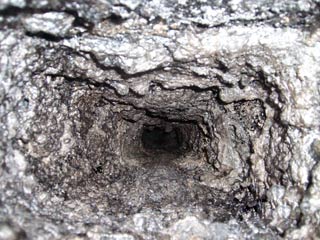Latest News
An Overlooked Danger: Chimney Fires
by DC Gabe Balsamo in General
Below is an article from our latest company newsletter “Winter, Christmas, and Safety Volume 1 Issue 2”
As the cold of the winter months begins to bear down, many of us will take comfort in the warmth of a wood stove or fireplace. These devices, in one form or another, have been around since the 12th century. Fireplaces and stoves are typically accompanied by a chimney to remove the byproducts of combustion. This system of heating is efficient; however it can also be dangerous if efforts are not made to properly clean and inspect a chimney each year. Creosote and other debris which can build up in the chimney over time can present a dangerous situation which can result in fire, damage to the home, and in the worst case scenario, injury or loss of life.
Most chimney fires are caused by creosote. This compound forms when the residue from combustion travels up the chimney and attaches to the walls of the structure. Chimneys are often much cooler than the wood stove or fire place, allowing for quick cooling and condensation. Over time, creosote particles can line the chimney, creating a significant fire hazard. Creosote Build-up in a Chimney Preventing chimney fires can be accomplished through regular inspections of the structure by a certified professional. In addition, there are several steps that you can take to help prevent the buildup of creosote in the first place. For example: Start fires with dry kindling or newspaper. Gasoline or kerosene should never be used. Do not burn wrapping paper, cardboard boxes, or Christmas trees. When possible, burn large logs rather than small branches.
Have the chimney inspected annually and have any creosote removed from the chimney walls to ensure safety. When it comes to chimney safety it is important to remember that clean chimneys do not catch on fire. Preventing creosote and having your chimney cleaned on a regular basis will provide protection from this often overlooked danger.


